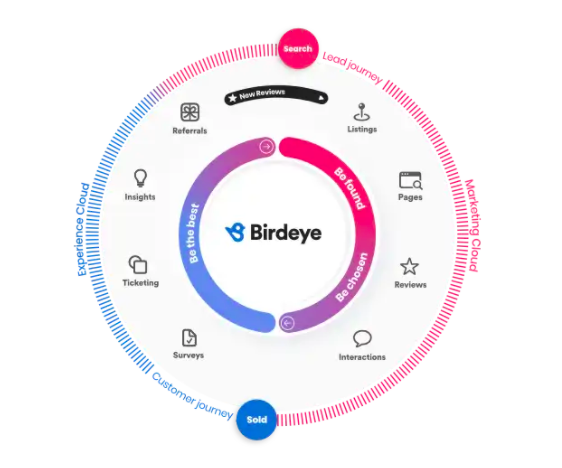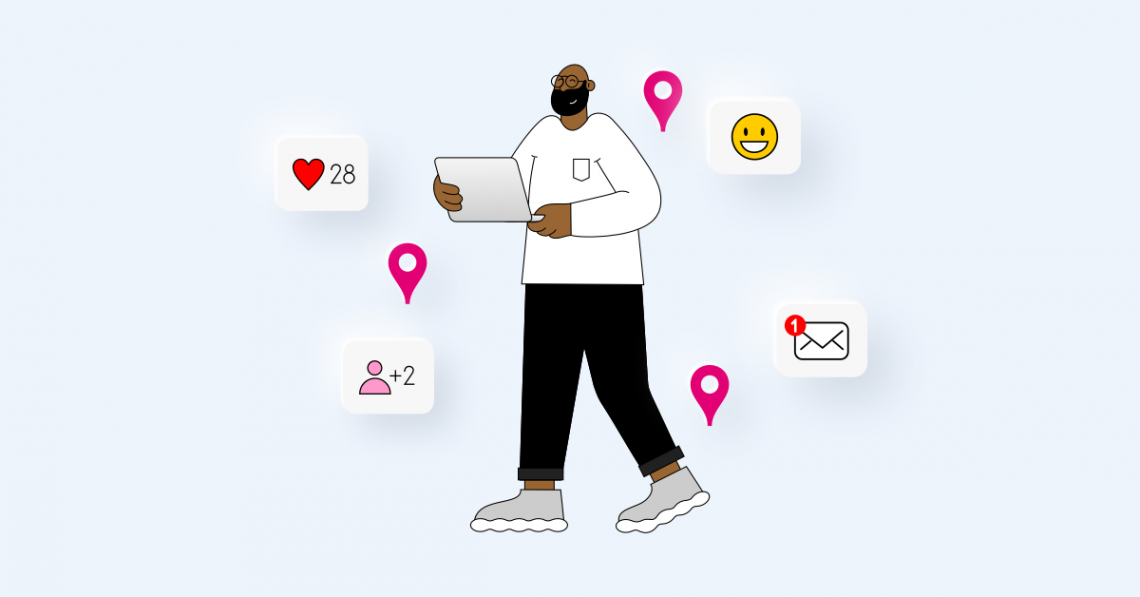Marketers at enterprise businesses have arrived at a true inflection point in which the world of customer acquisition and retention as we once knew it has rapidly shifted. Advertising – and more specifically, Google Ads – just doesn’t deliver results as it once did. Now new customers instead find the businesses they patronize through searches, social, online listings and referrals.
Existing customers, too, aren’t solely managed and retained by customer service or internal operations teams as they once were. Enhancing their experience – and helping nurture and drive repeat business – has become a key part of the marketer’s core responsibilities, which hadn’t always been the case.
10 years ago, brands tightly managed and controlled the customer experience. The reality for businesses today is that experiences now control brands. This dynamic shift is due to the impact of consumers reviewing, recommending and choosing brands completely outside of traditional marketing channels such as advertising.
Businesses have been forced to be responsive to that conversation and pivot their focus on better understanding their customers. By putting more emphasis on a customer-centric approach, strategic business growth has moved into the area of Experience Marketing.
What is Experience Marketing?
Experience Marketing reflects a new world of customer experience – one in which customers define how businesses respond to them, and not the other way around. Every customer interaction and touchpoint – from a review left online, to a webchat, to a survey response – becomes an opportunity to start or deepen a relationship, and a way to extract valuable insights from the experience.
Experience Marketing then empowers every employee of your business by breaking down data silos, connecting your entire organization to customers through centralized insights and customer messaging and interactions, and executing experience initiatives with far deeper data-driven insights.
Experience Marketing benefits businesses by fostering interdepartmental collaboration, built upon data, and enables teams to quickly take action by adapting their offerings and personalizing customer interactions as the customer journey evolves. As we’ve seen in the last year, the ability to quickly adapt and tailor experiences to consumer preferences has become imperative to sustaining growth.
Listen to our Modern Experience Marketer podcast here and read all about what makes the Modern Experience Marketer podcast a must on your Spotify list.
The Experience Marketing Flywheel
Managing customer feedback data at scale and leveraging insights from that data to fuel growth is a core component of Experience Marketing. As mentioned earlier, customers are reviewing and recommending outside of traditional marketing channels more than ever before. As review and referral volumes increase, businesses need to manage those channels in order to be successful.
Often reviews and referrals are based on the actual physical experience customers have with your product, store or service. They directly connect customer acquisition and customer experience. Businesses need to control their online reputation in order to get more positive reviews and more referrals.
Those channels influence purchasing decisions and bring more traffic to your website, your practice, your office or your brick & mortar store. From there, businesses aim to deliver positive experiences that delight those new customers to drive acquisition and brand loyalty.
When those concepts are combined, they create a flywheel. You’re getting more people in the door, creating better experiences, and this boosts loyalty – turning customer delight into revenue.

True Actionable Customer Insights
At the core of this flywheel is gaining a true, in-depth understanding of your customers. Experiences have taken center stage as a competitive differentiator, forcing businesses across industries to evolve and adopt a data-driven approach to growth. In fact, 53% of executives are now investing in customer data platforms.
There are more dashboards, reporting, spreadsheets and presentations focused on harvesting customer data than ever before. Over the last pandemic-dominated year, digital transformation accelerated by years, with businesses keen to stay on top of rapidly-changing customer behavior. However, as much as businesses have invested in improving experiences, 93% of those initiatives have tended to end in failure.
A common contributor to the gap between adopting and executing successful customer-centric initiatives is data analysis. Delivering on the high expectations of modern consumers requires translating data into tailored, actionable insights.
Also check out our article on ‘Why do performance marketers need to embrace machine learning optimization?’
Expand Data Analysis Beyond Traditional Metrics
The problem is that traditional customer feedback metrics are not actionable. Net Promoter Score (NPS), Customer Satisfaction (CSAT), Customer Effort Score (CES), and Likelihood to Renew or Continue to Use (LTR/LTU) provide insight into how happy a customer may be at a moment in time, but they beg the question: “what to do with that information?”.
Even when those metrics are combined with KPI’s such as customer churn rate, lifetime value, cross-sell, repeat customers and cost-to-serve, you’re still left with the same question every quarter.
Additionally, gleaning any sort of real insights from such programs consumes considerable effort: producing multiple reports from various channels; then manually analyzing them to decipher patterns; deciding on the action to take; then seeing the program through to completion. Consider this: only 23% of executives are confident in the speed at which they’re gaining accurate insights.
Experience Marketing streamlines the entire process:
- It broadens the scope of data mining across survey responses and reviews
- It automates analysis by generating insights in seconds through machine learning
- It shares insights with the right stakeholders, and alerts the right people about uncovered patterns in customer data.
This allows teams to mobilize quickly and make informed decisions on how to design and improve customer experiences.
Seamlessly Turn Insights Into Action That Impacts Revenue
Expanding customer data analysis beyond traditional metrics creates the opportunity for businesses to gain valuable insight much faster and make changes/adjustments accordingly that then drive real impact on revenue.
Here’s a real-world example of how data analysis from online customer reviews helped Amy Dickey, Director of Marketing at The Saxton Group, apply changes to their pricing that immediately impacted sales:
“In April 2018, we decided to increase the price of our dine-in kids meal from $0.99 to $1.99, and the response was very negative. We initially saw the negative feedback about the price in data analysis of our customer reviews. Then, a few weeks later we saw it in our sales data”.
Amy goes on to explain that, “before the price change, on average, a $0.99 kids meal would be tied to a $10 adult entree purchase. When the price increased on the kids meal to $1.99, we lost those $10 entree purchases. We were fortunate that data analysis of our customer reviews brought that feedback to our attention, and then our sales data backed it up. So we reverted back to $0.99 for dine-in kids meals and the sales returned”.
Comprehensive Customer Insights With Real Impact
Experience Marketing goes beyond the scope of traditional customer feedback metrics (NPS, CSAT, etc.) and expands into customer sentiment (customer review and survey analysis at scale). The combination provides a much more comprehensive view of the customer journey.
It enables faster, more-informed decision making that has real impact on your bottom line. That’s why 73% of companies with above-average Experience Marketing perform better financially than their competitors.
Experience Marketing is the bridge between customer-centricity and ROI. It highlights the good work you’re doing by letting people know you’re actively listening, continuously adapting the customer journey to their needs and delivering high-quality experiences.
Want to learn how Birdeye can help you get started with Experience Marketing?
Over 200,000 businesses of all sizes use our platform to be found, be chosen, and be the best. If you’d like to learn how Birdeye can help you get started with Experience Marketing, just click the banner below.

Originally published









